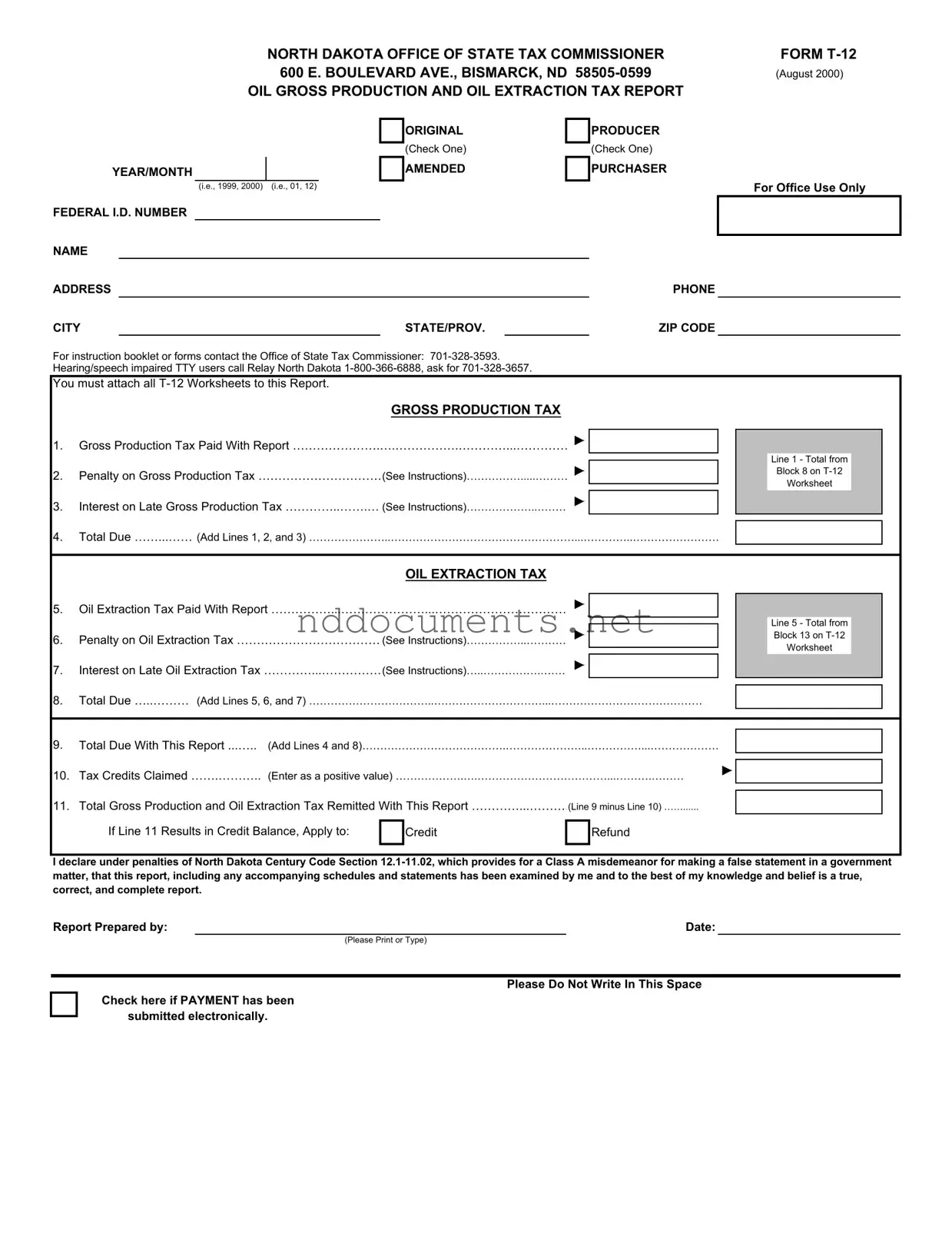Free North Dakota T 12 Template
The North Dakota T 12 form is an essential document used for reporting oil gross production and oil extraction taxes in the state. This form must be completed by producers and purchasers, ensuring accurate tax reporting for each production period. Understanding how to fill out this form correctly is crucial for compliance and to avoid potential penalties.
Make Your Document Online
